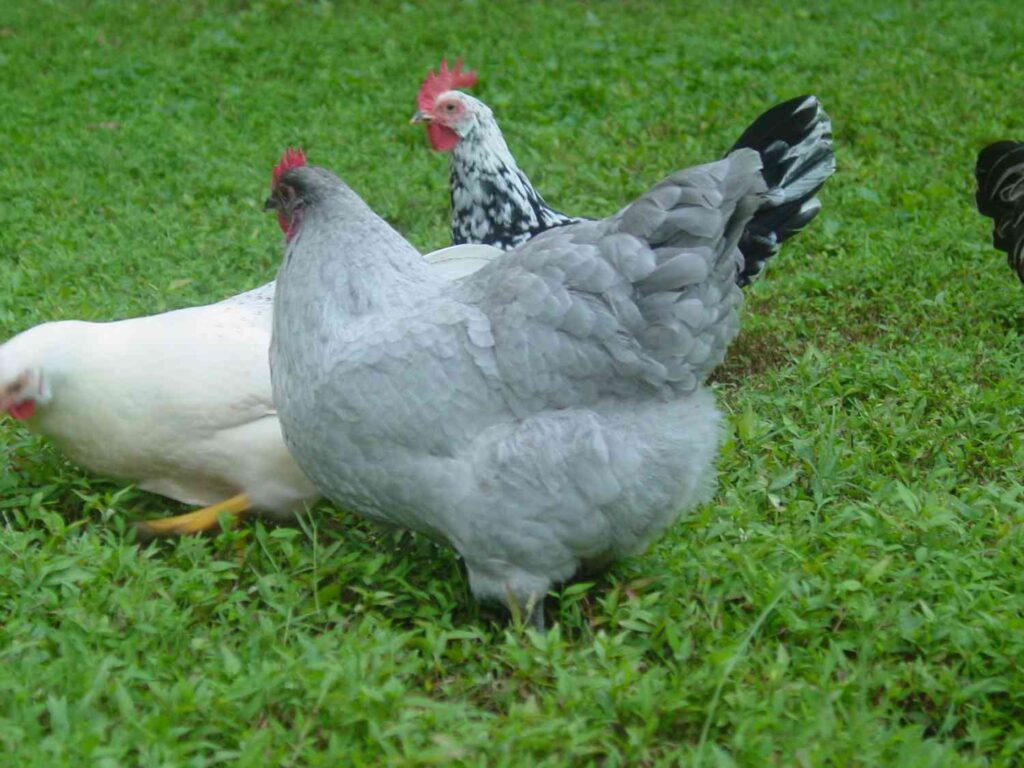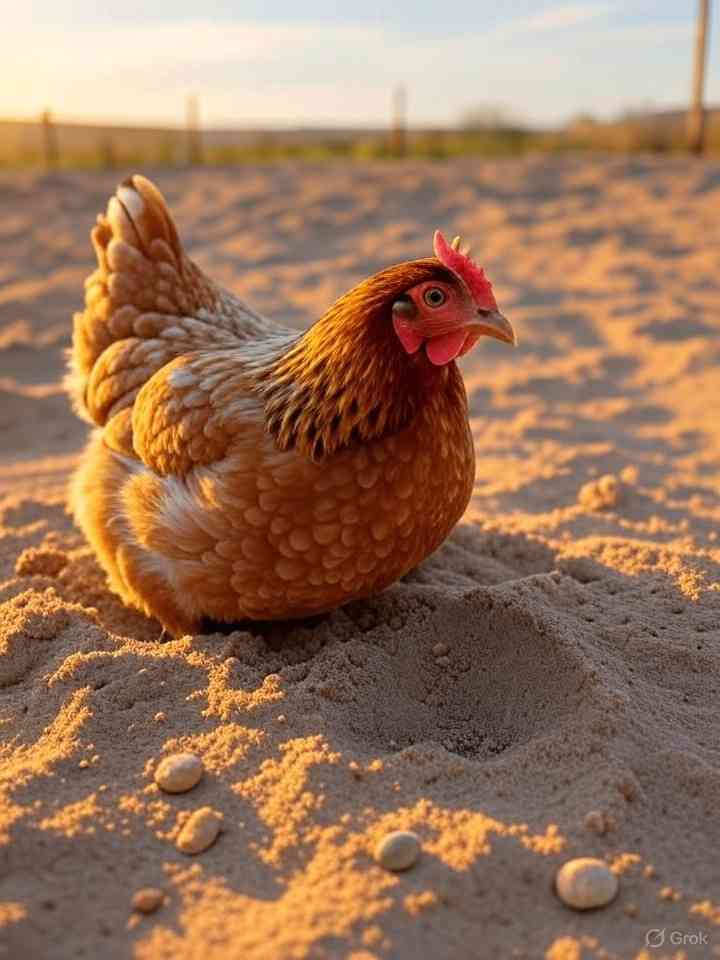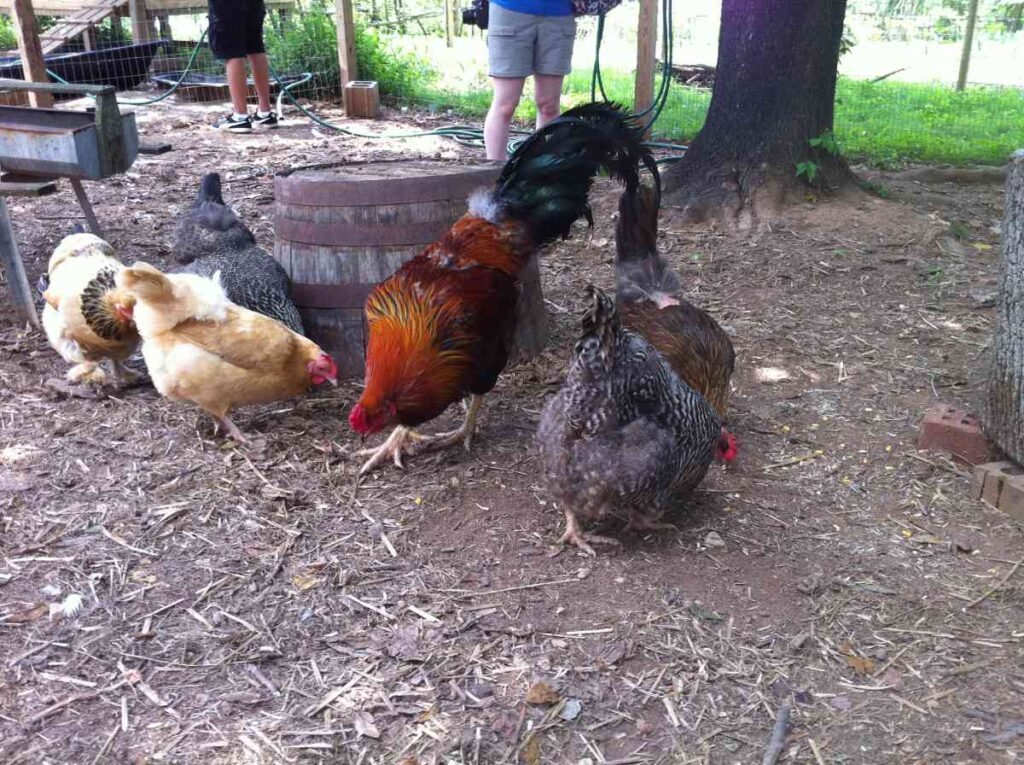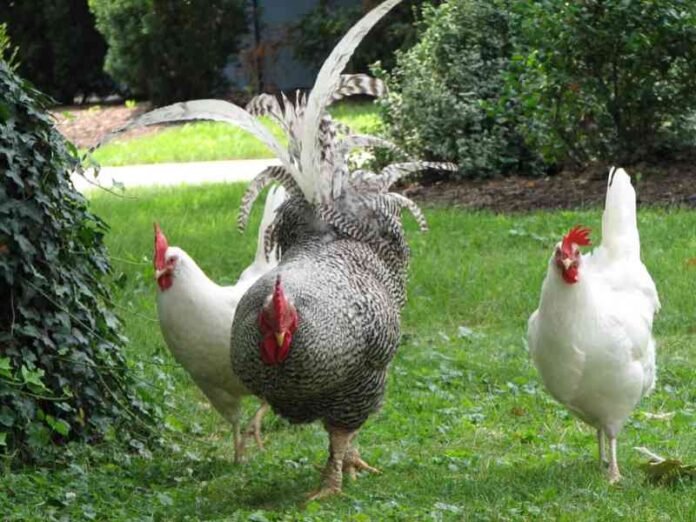While raising chickens, there are lots of factors that needs to considered and ground cover is one of them.
A muddy chicken run can raise serious health issues among flocks and it will compromise overall hygiene of the chicken coop.
So, what can be considered as the best ground covering for chicken run?
An ideal ground cover for chicken run must provide excellent drainage, easy maintenance, support natural behaviours like dust bathing, and withstand heavy traffic and weather conditions.
Coarse sand, pine straw, grass or wood chips can be your preferred material to be used as ground covering for chicken run.
These different materials make chicken runs better by letting them scratch and hunt for food naturally, keeping the area from getting muddy and providing your chickens places to dust bathe to keep their feathers clean.
Later in this article, you’ll discover the most cost-effective ground cover options tailored to your specific climate and weather conditions.
Before that let’s understand the importance of ground covering in detail.
Benefits of Ground Cover for a Chicken Run
Good ground cover helps keep the run dry by improving drainage and preventing mud buildup. This reduces the risk of foot infections and keeps your flock’s feathers clean and healthy.
It supports natural chicken behaviors like scratching, foraging, and dust bathing, which keep birds active and happy. These activities also help maintain feather health and reduce stress.
Durable ground cover materials protect the soil from erosion, control unpleasant odors, and make cleaning easier. This ensures a healthier, more hygienic environment for both chickens and their keepers.
6 Best Ground Covers for Your Chicken Run

Selecting proper ground cover for your chicken run is essential for flock health, comfort, and easier maintenance. The right material prevents bacterial infections, supports natural behaviors like dust bathing, and simplifies daily care routines.
Different covers suit various climates, drainage needs, and budgets—some prioritize cleanliness while others encourage natural scratching.
Also Read: How to Get Chickens to Go into the Coop at Night?
1. Sand


Coarse construction sand offers excellent drainage, keeping runs dry and reducing mud and bacteria buildup. It’s easy to rake and spot-clean while providing chickens with a natural dust bath for parasite control.
Sand provides solid footing that reduces slips and prevents foot issues like bumblefoot when properly maintained. Waste dries quickly on the surface, making odor management much simpler than with organic ground covers.
It doesn’t decompose, so it stays level and functional for extended periods with only occasional top-ups needed. Sand works best in wet climates or heavy-traffic runs where mud formation is a persistent problem.
Always choose coarse, washed river sand or builder’s sand rather than fine play sand to prevent compaction and dust issues. Pair with proper drainage underneath for maximum performance and chicken comfort.
2. Grass


Fresh grass runs look attractive and allow chickens to graze naturally, adding essential vitamins to their diet. Birds enjoy scratching for insects and bugs, which keeps them mentally stimulated and physically active.
Grass cover works best in large, low-density runs or as part of rotational grazing systems. In smaller confined spaces, chickens can quickly destroy grass coverage, leaving bare soil that turns muddy.
To maintain healthy grass, overseed regularly and rest sections using movable fencing or chicken tractors. Hardy grass blends with rye, fescue, and clover handle pecking and heavy foot traffic better than standard lawn varieties.
Good drainage is absolutely essential, or wet patches will quickly turn to muddy mess, especially around feeders and waterers. Consider installing raised pathways or pavers in high-traffic zones to protect grass roots from damage.
Mow grass high to keep root systems strong and remove wet clumps promptly to prevent soil compaction. Expect seasonal fluctuations with lush growth in spring and stress during winter months or drought conditions.
Must Read: How to Clean and Disinfect the Chicken Coop?
3. Wood Chips


Arborist wood chips create a springy, natural surface that provides excellent drainage while supporting natural chicken behaviors. They help control odors by trapping moisture and provide an ideal environment for scratching and foraging.
Chips slowly decompose into rich compost over time, naturally improving the soil quality underneath the run. Refresh the top layer periodically and perform seasonal deep-cleaning to maintain optimal hygiene standards.
Always avoid fresh black walnut chips and any pressure-treated wood materials, as both can be harmful to chickens. Coarse, irregular chips perform much better than fine bark mulch or shavings in wet weather conditions.
Wood chips work exceptionally well under trees or in shaded runs where grass struggles to grow properly. They integrate perfectly with deep-litter management approaches to reduce maintenance while boosting overall soil health.
4. Gravel
Pea gravel or small rounded stones dramatically improve drainage and eliminate mud problems in trouble spots. It’s extremely durable and long-lasting, making it ideal for gateways, areas under waterers, and main traffic pathways.
Use a properly compacted base layer underneath to prevent sinking and mixing with underlying soil. Consider installing geotextile fabric as an underlay to separate gravel from dirt for maximum longevity and performance.
Gravel isn’t suitable for dust bathing activities and can be uncomfortable on chicken feet if edges are too sharp. Pair gravel areas with sand or chip zones to meet both comfort needs and natural behavioral requirements.
It’s easy to hose down and disinfect during disease-control situations, making it valuable for biosecurity measures. Gravel works best as a targeted solution for problem areas rather than full-run coverage in most chicken setups.
In colder climates, gravel can feel harsh underfoot, so provide softer resting areas for chicken comfort. Monitor regularly for trapped feed that could attract rodents and other unwanted pests.
5. Pine Straw


Pine needles naturally form a light, airy mat that effectively sheds water and reduces surface mud formation. Chickens love scratching through pine straw, which helps keep the run area active and naturally clean.
It’s inexpensive or often free in many regions and easy to refresh as the material breaks down over time. Pine straw gradually adds valuable organic matter to soil and improves overall soil structure and health.
Avoid creating thick, matted layers that can hold excess moisture—fluff or turn the straw routinely for best results. In very wet climates, combine pine straw with wood chips or sand for improved durability and drainage.
Pine straw is gentle on chicken feet and provides a comfortable surface for resting and relaxation. It’s also less likely to blow away in windy conditions compared to dry leaves when properly layered.
Also Read: How to Stop Chickens from Pooping in Nesting Boxes?
6. Dry Leaves
Dry leaves provide a budget-friendly, seasonal ground cover that chickens thoroughly enjoy shredding and scratching through. They create excellent foraging opportunities and work well in deep-litter management systems.
Leaves tend to compact when wet, so mix them with wood chips or straw to prevent matting and odor problems. Shredded leaves perform significantly better than whole leaves for maintaining proper airflow and even decomposition.
Reapply leaves frequently during rainy seasons since they decompose quickly in wet conditions. Always source chemical-free leaves from areas not treated with herbicides or pesticides to protect your flock’s health.
Conclusion
Choose ground cover materials based on your specific drainage needs, local climate conditions, and flock density requirements. The most practical approach often involves combining different materials to create a balanced system that addresses multiple needs.
A successful setup typically pairs sand or gravel in high-traffic zones with softer materials like wood chips, pine straw, or leaves in other areas. This combination provides optimal hygiene, comfort, and opportunities for natural chicken behaviors throughout the year.


Khaja Moinuddin, a computer science graduate, finds joy in gardening and homesteading. Join him on this blog as he shares his experiences in homesteading, gardening, and composting


